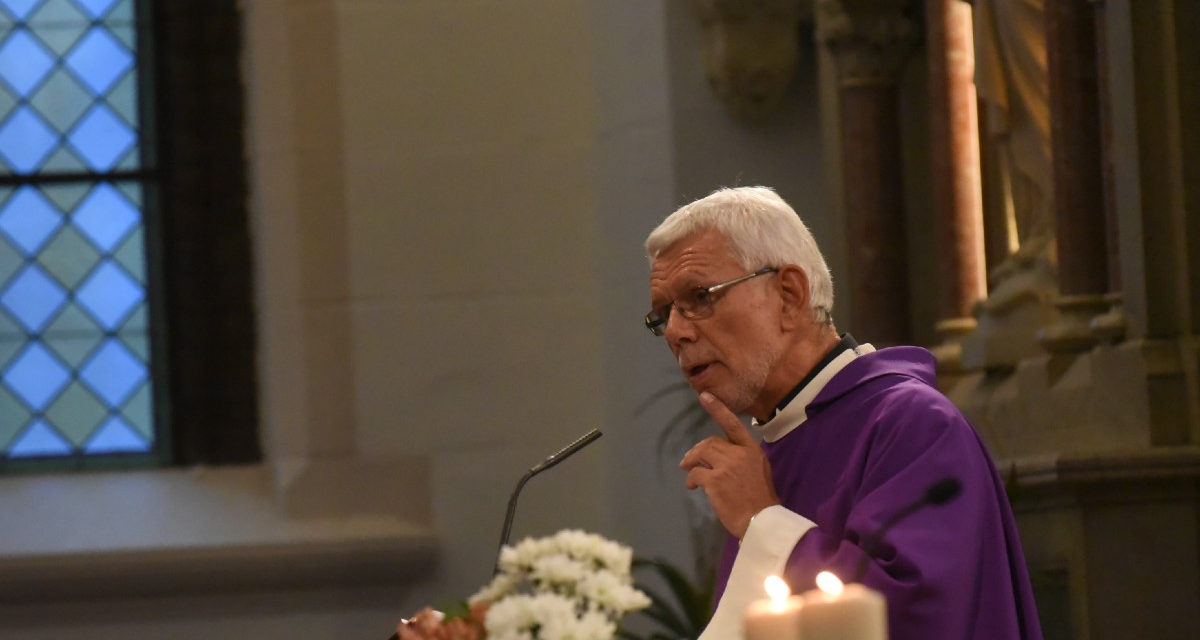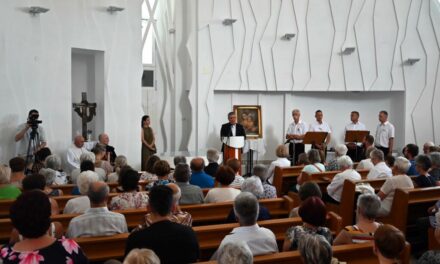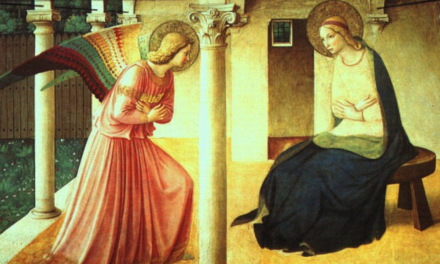Although he was in clerical civilian clothes, the Jesuit monk László Vértesaljai was also thoroughly beaten by the police on the half-century anniversary of the revolution. The priest recalled to the Mandiner: he himself buried a former celebrant who was shot in the larynx and later died of its complications.
At the time, the right-wing newspapers of the time wrote: on the 50th anniversary of the 1956 revolution and freedom struggle, along with countless other peaceful commemorators, László Vértesaljai, the church director of the Church of the Sacred Heart in Mária Street, was brutally assaulted by the police after the handle of his Hungarian flag was shot with a tear gas grenade. from his hand.
On the occasion of this, we contacted the Jesuit father who was beaten 15 years ago, all the more so since the events of the fall of 2006 have not subsided in the public discourse. Not only because we are living the commemoration days of the revolution, but also because two relevant films were made, and some on the left dispute its truth. In addition, in the opposition primaries, politicians from South Africa - for example, Klára Dobrev - threatened to cut off the excessive support of the church's public service institutions. It is known that under the Medgyessy and Gyurcsány governments, the then left-liberal course already made an attempt to drastically reduce the so-called additional support of church schools resulting from the Vatican treaty.
Catholic priest László Vértesaljai, who is currently the editor in charge of the Hungarian broadcast of the Vatican Radio in Rome, did not wish to express himself on current political issues this time, but wrote a lyrical memoir for the Mandiner. In its ranks, the events of the communist dictatorship and 2006 are layered on top of each other. Mandiner published this instructive text he sent below in its entirety, without commentary. Here it is:
The leaven of hatred does not leaven bread
In 1980, on my way home from the consecration of my Luxembourgish student from the German-Hungarian College in Rome, I was arrested at the Keleti railway station - recalls Father László Vértesaljai - because I had "smuggled counter-revolutionary propaganda material into the People's Republic". In fact, I only used a Frankfurter Allgemeine Zeitung as wrapping paper to protect my King Crimson "sizzling" record from breaking in my suitcase. But one of its articles talked about the "Volksaufstand" of '56. "Resurrection with sooo?" And I still had a few images of the Virgin Mary... I didn't know the article, let alone the Virgin.
In 1988, one year before the reburial of Imre Nagy and his fellow martyrs, I was outside in plot 301, which was overgrown with weeds at the time. A year later, I stood on Hősök Square among the people laying wreaths, then on June 27, during the demonstration near Transylvania, with a Hungarian flag on my shoulder and a rosary in my hand, I marched together with hundreds of thousands, praying peacefully. Consecration, cemetery, reburial, prayer of the rosary... I don't think I need to explain that these are priestly functions!
In the meantime - at the end of January 1989 - with Imré Pozsgay, the concept of popular uprising also gained "civil rights" - let's say nice - at least in certain circles of the left.
After that, 50 years after the Revolution, came the cold shower, the "recall of the past", that the People's Uprising did not belong to the people after all.
So that those who, due to their age, could not be there "originally" can now form an image of how brutal the suppression of 1956 was through the horse attack, through the action of the "police" equipped with rubber bullets and vipers. However, on October 23, 2006, this 3D model experiment was more than "successful".
On that memorable evening, around eight o'clock, a "masked" policeman shot the handle of my Hungarian flag with a hole in my hand by firing a tear gas grenade - he was not even a hundred meters away. Priests get fired, don't they? But what were you doing there? Well, I went to remember the half-century anniversary celebration. To recall and make present those days when the Hungarian man got back on his feet and got up to have a life worthy of a human being.
My priestly profession also fits into this formula - a life worthy of a human being; because what else could it be than a life worthy of man given by God, in the power and example of Jesus?!
From the perspective of fifteen years, the commemorative image is already a diptych: on the one hand, the sublimity of commemoration, the dense forest of unfurled flags, the proud serenity of children sitting on their fathers' necks, and the peaceful smiles of serene grandparents. At the hymn "Our Blessed Mother," the whole of Astoria was one open church with our supplicant ascending. I went home here and there, like from a Sunday mass. The other half of the diptych is chaotic: shocked silence and alarmed running, hands held in front of faces and dark blue facelessness...
Now I am still thinking of my compatriot from Cinkota, who was also brought together by the desire for a peaceful celebration, but before he could sing the national anthem, he was shot in the throat at close range on his way out of the Deák tér metro station. Then blood and hospital, the wound heals, but becomes cancerous. And he dies because he was shot. The family found me with the intention of "burying a fellow priest".
Like my predecessors, I buried the dead of that time after 1956. So 2006 also has a dead person!
However, from the double image, the hourglass of that beautiful day shines for me, while the other image would fade by itself, if the convulsive effort to explain itself did not bleed again and again, because the truth is known by those innocents with stifled words, for whom the liberal arrogance is well known, let's say , so: "really democratically" took care of his problem.
They didn't look at anything or anyone. They hit. And what is left of all this? Tired and bitter hatred. He doesn't look at anything or anyone. He just hates it. Their sourdough will never become bread. It won't work on wheat.
Source and image: mandiner.hu / László Vértesaljai













